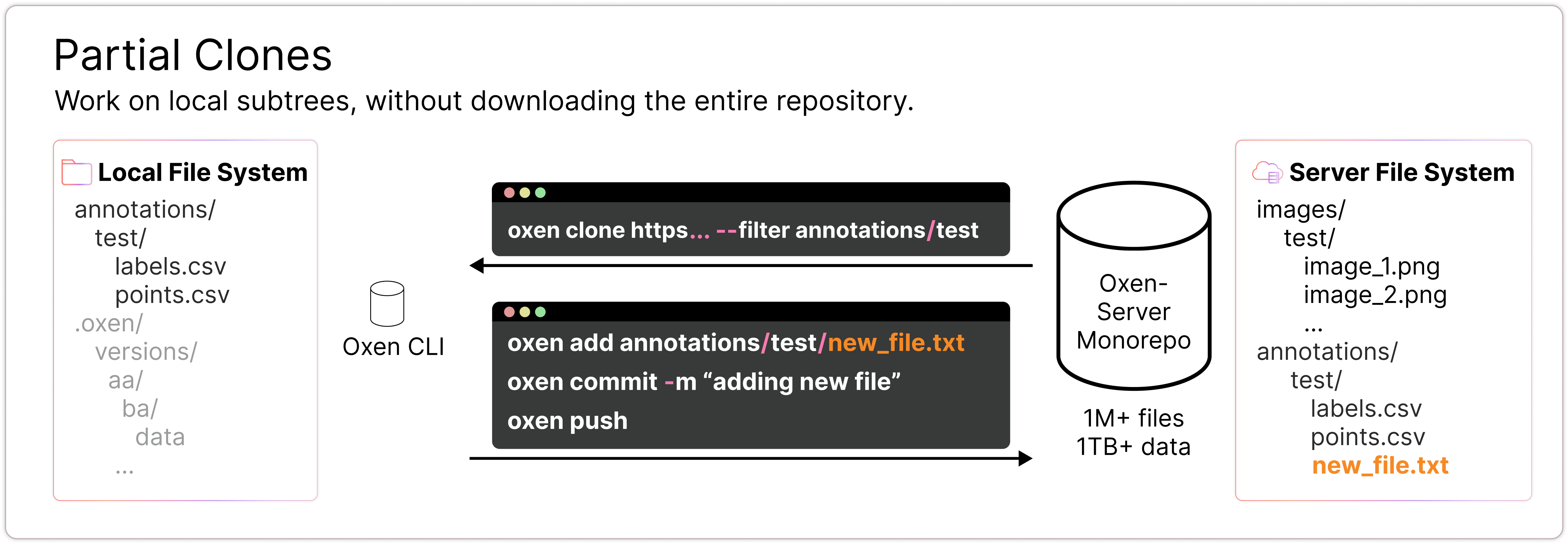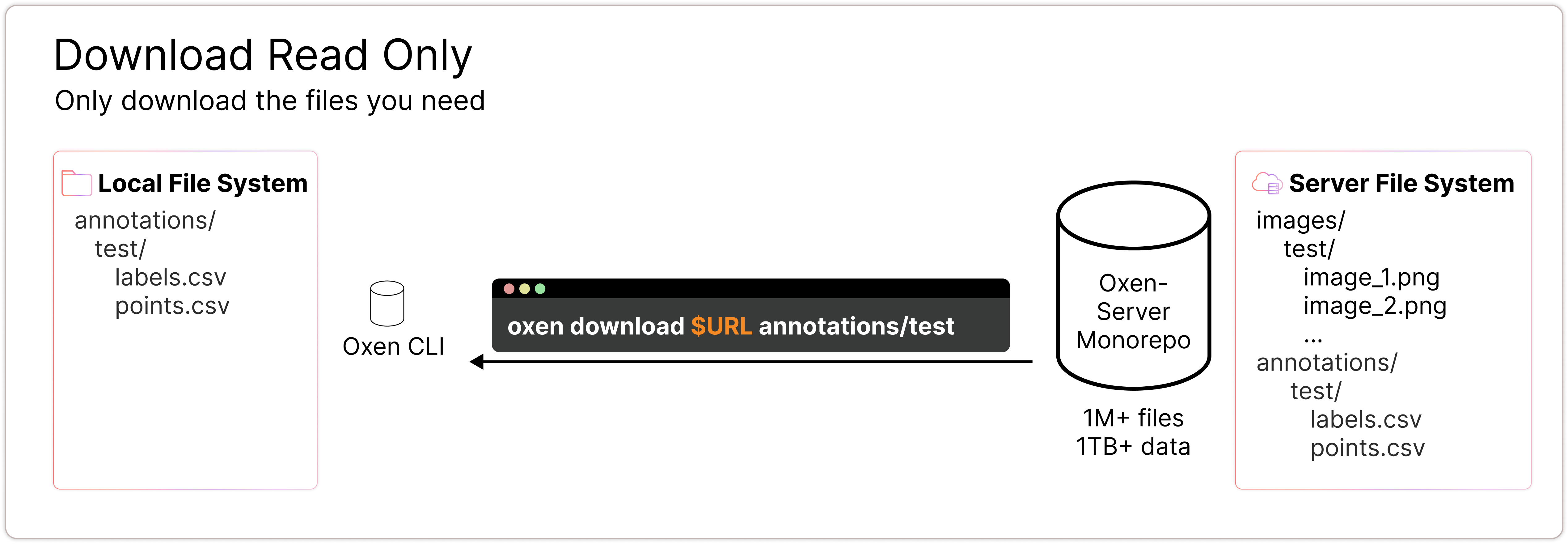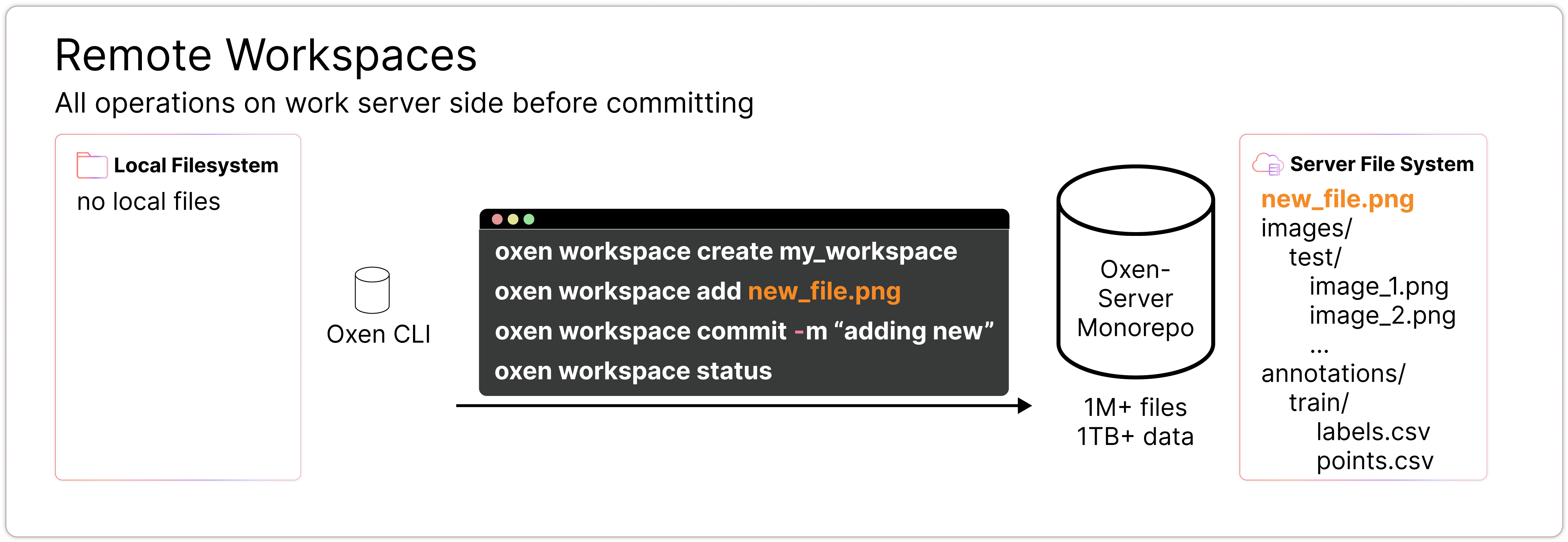- Partial Clones - Clone a subtree of the data in your repository to a local working directory.
- Download Read Only - Download a read only copy of the subset to your local machine.
- Remote Workspaces - Interact with your data all server side, no files are downloaded locally.
Partial Clones
The first command line parameter you should be aware of is the--filter flag. This flag is inclusive for the paths you want to clone.
images/roses directory into a local working directory. Under the hood, it also creates a .oxen directory which contains the merkle tree for the cloned data, and content addressable copies of each file in the subtree.

--depth flag to limit how deep the clone goes.
Download Read Only
If you have no intention of making any changes to the data, the easiest way to interact with a subset is to download a read only copy. This can be done with theoxen download command.

Remote Workspaces
You may not need a local copy of the data at all. If you are working with a remote dataset, you can interact with it all server side.
Instantiating a Workspace
A workspace is created off of aRemoteRepo and a branch name. The branch name is just a convenience for the user to create a workspace on the underlying commit id.
main).
Adding Files
When adding data, it is always a good idea to create a branch for the changes you are about to make. This will allow you to commit changes without affecting the default branch.Creating a Branch
Uploading Files
Workspaces allow you to upload files without immediately committing them. Think of this as a staging area where you can upload the data, and then batch commit when you are ready.Removing Uploaded Files
If you accidentally add file from the remote workspace and want to remove it, no worries, you can unstage it withoxen remote rm --staged.